
01-01-2026 18:35
Original loamy soil aside a artificial lake.The co

31-12-2025 19:27
Collected from loamy soil, at waterside (completel

30-12-2025 16:44
Pascal DucosBonjour,Une anamorphe rose stipitée, très nombre

30-12-2025 17:14
 Bernard CLESSE
Bernard CLESSE
Bonjour à toutes et tous,Pourriez-vous aider Albe

29-12-2025 10:15
Hulda Caroline HolteHello, I found and collected this propoloid ascom

30-12-2025 09:04
Hello.A Pyrenomycete sprouting sparsely but very d

29-12-2025 17:44
Isabelle CharissouBonjour,J'aimerais savoir si d'autres personnes au
Substrate: Phragmites australis;
Thyriothecia: 222-235 x 220-234 µm; orbicular; covered with an irregular network of hyphae, at the margin short light brown or hyaline fringes;
Ostiole: diameter 18 µm;
Asci: clavate, Lugol and Melzer negative, 8-spored, 54-70 x 6-9 µm;
Paraphyses: 85 x 4 µm ; filiform, constricted at the different septa, cells of different width and up to 15 µm long
Spore: narrowly fusiform, with 1 to 4 septs, rounded at the poles and narrowing the base; 23-29 x 3.3-4 µm
Brown anchor hyphae: 70 x 5 µm.
The article "The Genera Trichothyrina and Actinopeltis in Britain" by J.P. Ellis mentions only one species with septated spores namely Trichothyrina norfolciana but with hyaline spores as substrate Carex riparial.
Any help is welcome as I have too little experience with this genus.
Many thanks, in advance,
François Bartholomeeusen



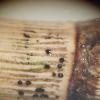
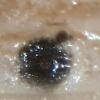
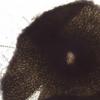
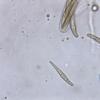
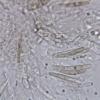
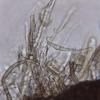
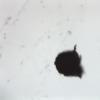
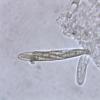
 ampar1-as-0001.jpg
ampar1-as-0001.jpg